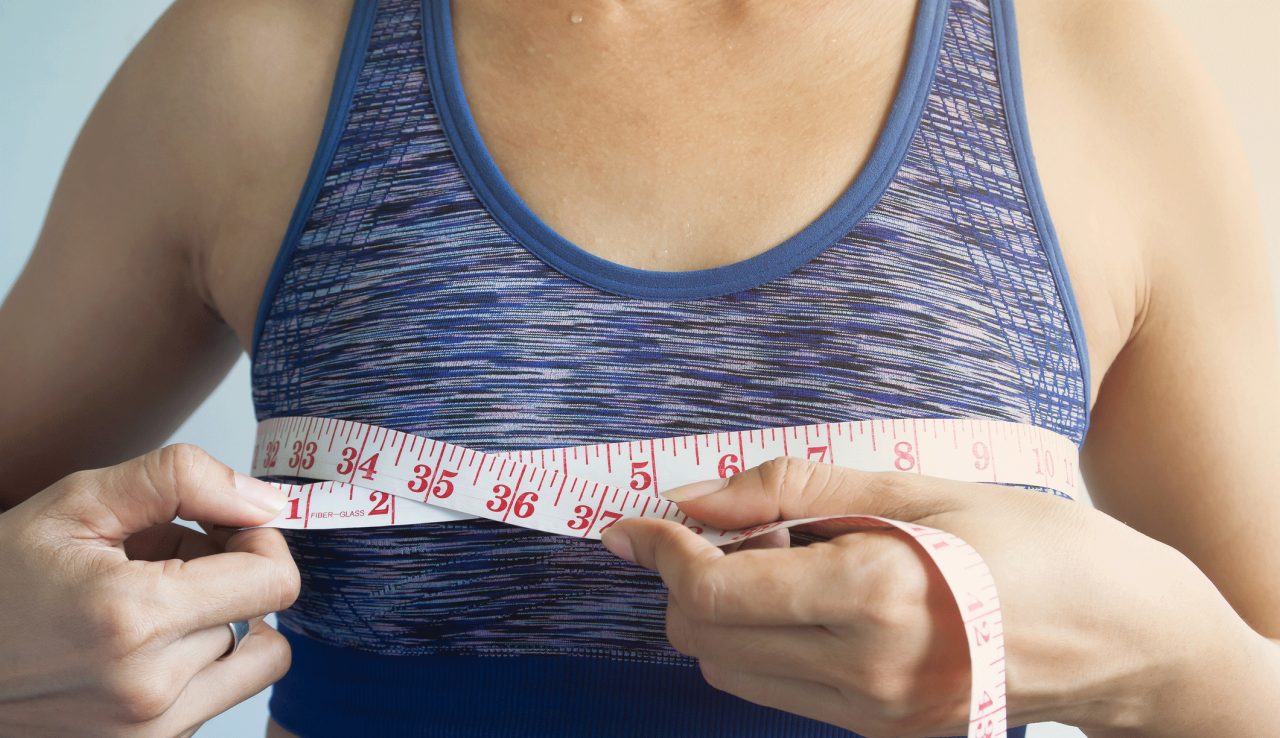Why Your Bra Size Should Be Correct

A bra that doesn’t fit well increases your risk of neck and back pain and other problems. But getting the right bra isn’t obvious, without help.
Most women don’t wear the right size bra — and, yes, it matters.
You might think this isn’t worth your time to think about, but investing in the right bra could make you more comfortable, and comfort promotes happiness!
YOU MIGHT ALSO LIKE: What Is a Healthy Weight for Women?
Here’s a quick checklist to ask yourself:
1. Do you have uncomfortable grooves in your shoulders?
Even women with smaller breasts may feel pressure in their shoulders from a bra strap. If your breasts are large, you may feel pain. The problem: a loose band, which rides up your back and makes the straps dig in. The remedy: choose a hook that makes the band tighter. You might have chosen a band that was comfortable in the store but became too loose as the bra stretched over time. Always try on a bra on the outermost hook so you can tighten it up later. You might also need a different size. Try a bra with a smaller band and a bigger cup. So if your current bra is 34 B you might do better with 32C.
2. Do you have neck or back pain?
Again, you may be wearing a bra with too loose a band, which allows your breasts to fall forward, pulling your neck, shoulders, and upper back into a position that eventually causes pain. Use a hook that tightens the band, or replace and old bra, and when you’re shopping, try one with a smaller band and perhaps a bigger cup.
3. Do you have heartburn?
This time the problem may be a band that is too tight. When you’re sitting, the band may pull tighter and press on your diaphragm, which lies just above your abdomen. That pressure pushes stomach acid higher into your esophagus and you feel heartburn.
You can buy a bra extender to see if it helps your heartburn. If it’s helpful, invest in a bra with a larger band size, but be sure to go down a cup size. So you might go from 34 C to 36 B.
4. Do you have a rash?
If your breast is resting on your torso, sweat will pool there and cause a rash or even a fungal infection. Or an underwire might be pressing too hard on your chest.
You may need a cream to address the rash, or it might improve on its own if you give your skin a break. You can find a supportive bra without an underwire. If you prefer an underwire, try going up a cup size. Your goal is a bra that keeps your breast from touching your chest. The wire shouldn’t press on you either.
In many lingerie stores, experienced salespeople will measure your breasts for you. But you can do this on your own. Wrap a tape measure around your rib cage just beneath your breasts. Your bra size will be five or four inches bigger (five if your measurement is an odd number). Measure your bust by putting the tape over your nipples. Now subtract the band number from the bust number. Your cup size is AA if the difference is zero, A for one, B for two, C for three, D for four, and DD for five.
However, the best test is to try the bra on, as your size may vary with the bra.
Don’t assume you have to spend more money than you’d like to for a bra to fit you well. Very inexpensive bras, however, may stretch out and become too loose more quickly.
Updated:
June 29, 2020
Reviewed By:
Janet O’Dell, RN